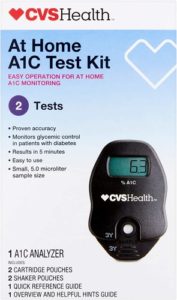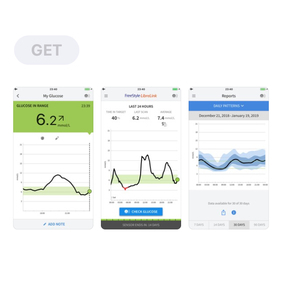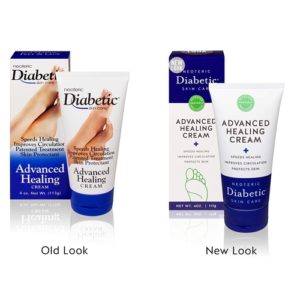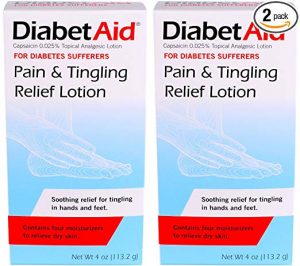Check If You Have Diabetes At Home
How to do a self-check for diabetes
Home blood sugar monitoring shows the body’s effectiveness in processing glucose. Fortunately, you can easily and conveniently test your blood sugar in the comfort of your home using a home blood glucose monitor.
Home blood glucose test kits are designed to read glucose testing strips. The testing strips allow the kit to effectively determine the blood glucose level in a small drop of blood. You can get a sample of your blood by pricking your finger using a tiny needle or lancet.
For accurate blood sugar testing, it is recommended that you keep a log or record of the food you eat and keep an eye out for trends in your blood sugar readings. Whether the meals you are consuming are high or low in carbohydrates, higher than normal blood glucose readings after meals suggest that your body is not using up blood sugar effectively after meals.
Most glucose monitors have a different working mechanism and healthcare providers recommended that you read the test kit manual before use. However, in most cases, testing strips should only be inserted into the monitor just before readings.
The blood sugar testing process
- Wash and dry your hands well before handling your test kit. Substances such as food can give you inaccurate readings.
- Some testing methods advise cleaning the testing area with warm water and soap while others recommend using an alcohol swab. Either way, it’s essential to ensure that the testing area is clean and dry before testing.
- Most glucose monitors recommend testing on less sensitive areas such as the arm. However, rapid changes in your blood sugar levels may not be accurately detected in less sensitive areas of the body. The best place to test for rapid blood sugar changes is the finger.
- In case you’re testing on your finger, test on the side and test different fingers each time. Nowadays, most lancets allow users to set penetration depth and users with drier or thicker skin can set higher penetration in order to draw enough blood for the test.
- Position your finger against a hard surface before lancing it. The lance should be applied firmly but without forcing it.
- Hold the finger at chest level and squeeze it gently.
- Allow one drop of blood to gently flow onto the testing strip and note the reading.
- Record the reading after each test.
If you have diabetes, your doctor may recommend alternative tests to measure HbA1c (glycated hemoglobin). Although the procedure is typically the same, the readings will be different. This test is usually used to indicate blood sugar level trends over 2 to 3 months.
When should a blood sugar test be done?
Doctors usually recommend that blood sugar tests be done at 3 different times of the day for several days:
- Morning fasting reading
A morning fasting reading helps provide information about your blood glucose before you drink or eat anything in the morning. Blood glucose readings taken before consuming anything helps provide a baseline number that offers clues about the body’s glucose processes throughout the day.
- Before meals
Blood sugar levels before meals are typically low. Therefore, high blood sugar readings before meals may indicate problems regulating blood glucose.
- After meals
Testing blood sugar levels after meals shows how your body is reacting to food. It can also help determine whether glucose is reaching the cells successfully. Post-meal blood glucose testing can help diagnose diabetes during pregnancy (gestational diabetes). It is recommended that post-meal testing be done about 2 hours after meals.
It is important to keep in mind that your doctor may have to personalize your glucose monitoring schedule according to your specific condition, needs, and goals.
Blood glucose readings for diabetics
- Fasting test (morning test before a meal): 80 to 130 mg/dl (milligrams per deciliter)
- Before meals: 70 to 130 mg/dl
- Two hours after a meal: Under 180 mg/dl
- At bedtime: Below 120 mg/dl
- HbA1c: 7% or lower
It is recommended that you get clear target blood sugar numbers from your doctor before you begin home testing. This is because target figures usually change over time and vary depending on a wide range of factors such as a person’s weight, age, and health.
Blood sugar levels for people who don’t have diabetes
- Fasting test (morning test before a meal): Less than 100 mg/dl
- Before meals: Below 110 mg/dl
- Two hours after a meal: Below 140 mg/dl
- At bedtime: Below 120 mg/dl
- HbA1c: 5.7% or lower
 Choosing a home blood glucose test kit
Choosing a home blood glucose test kit
Testing strips, lancets, and a blood glucose monitor are all required for blood sugar tests. Some home testing kits require users to purchase each item separately, while others come as a complete package with all there.
Diabetics use several testing strips each day throughout their lives, and so it is essential to carefully consider all the tests associated with the model you intend to use.
Other tips include:
- Choose a monitor with automatic coding. This helps you avoid the hassles of coding your monitor with each test.
- Consult your health insurance provider to see which monitors are covered.
- Check whether the monitor stores previous results.
- Consider portability especially if you commute or travel a lot.
- Consider the blood sample size required for tests, particularly if you don’t like pricking yourself.
What are the symptoms of diabetes?
In some cases, people who have diabetes may not have any symptoms of the disease. However, this does not necessarily mean they don’t have the disease. Many of the symptoms of type 1 and type 2 diabetes may be the same particularly because both conditions affect the regulation of blood sugar in the body. These symptoms include:
- Increased thirst and hunger
- Unexplainable fatigue
- Unexplained weight loss
- Increased urination
- Slow-healing wounds and sores
- High blood pressure
- Blurred vision
The bottom-line
Diabetes cannot be diagnosed using home tests alone. If you notice any unusual readings, it is essential to see your doctor for further testing.
Your doctor might recommend fasting tests, HbA1c tests, oral glucose tolerance tests, or a combination of several different methods.




 Diabetes and the COVID-19 Pandemic
Diabetes and the COVID-19 Pandemic

 Editor’s Note: The FreeStyle LibreLink app and the LibreLinkUp are both now available from the app store for free download. the The LibreLink is compatible with the iPhone 7 and later versions and the LibreLinkUp has compatibility with iPad and iPhone. There’s no need to have the separate reader device.
Editor’s Note: The FreeStyle LibreLink app and the LibreLinkUp are both now available from the app store for free download. the The LibreLink is compatible with the iPhone 7 and later versions and the LibreLinkUp has compatibility with iPad and iPhone. There’s no need to have the separate reader device.






 Whilst the idea of inhaled insulin has been around for several decades, researchers only made it possible in the 1990s. With inhalers much like the ones used by asthma patients, people with diabetes simply breathe a fine aerosolized insulin powder into the lungs where it is absorbed into the blood through blood vessels.
Whilst the idea of inhaled insulin has been around for several decades, researchers only made it possible in the 1990s. With inhalers much like the ones used by asthma patients, people with diabetes simply breathe a fine aerosolized insulin powder into the lungs where it is absorbed into the blood through blood vessels.